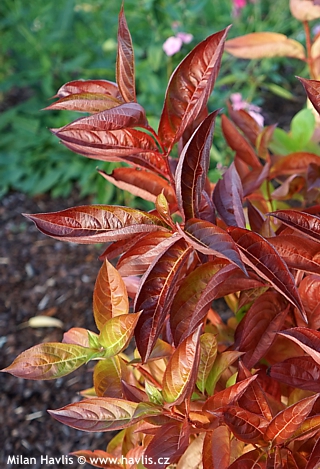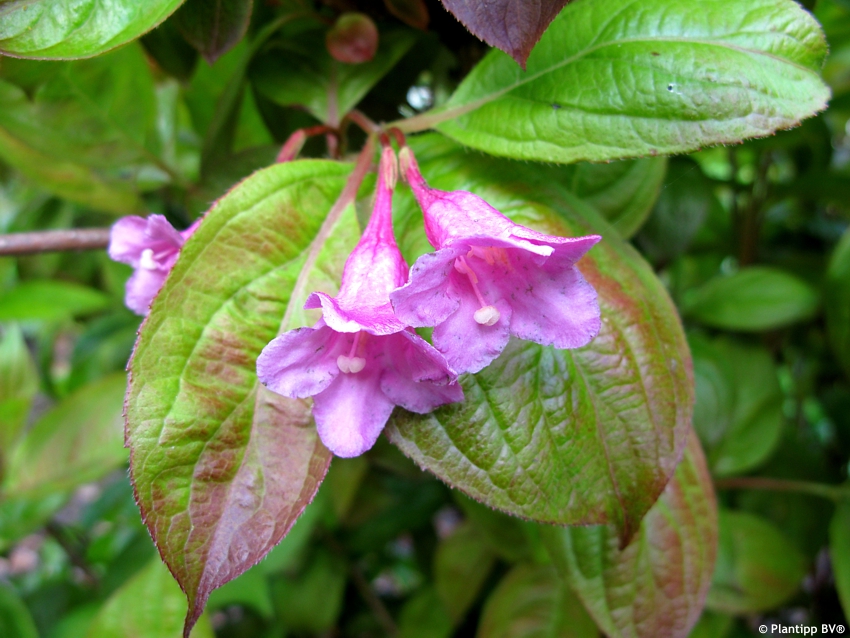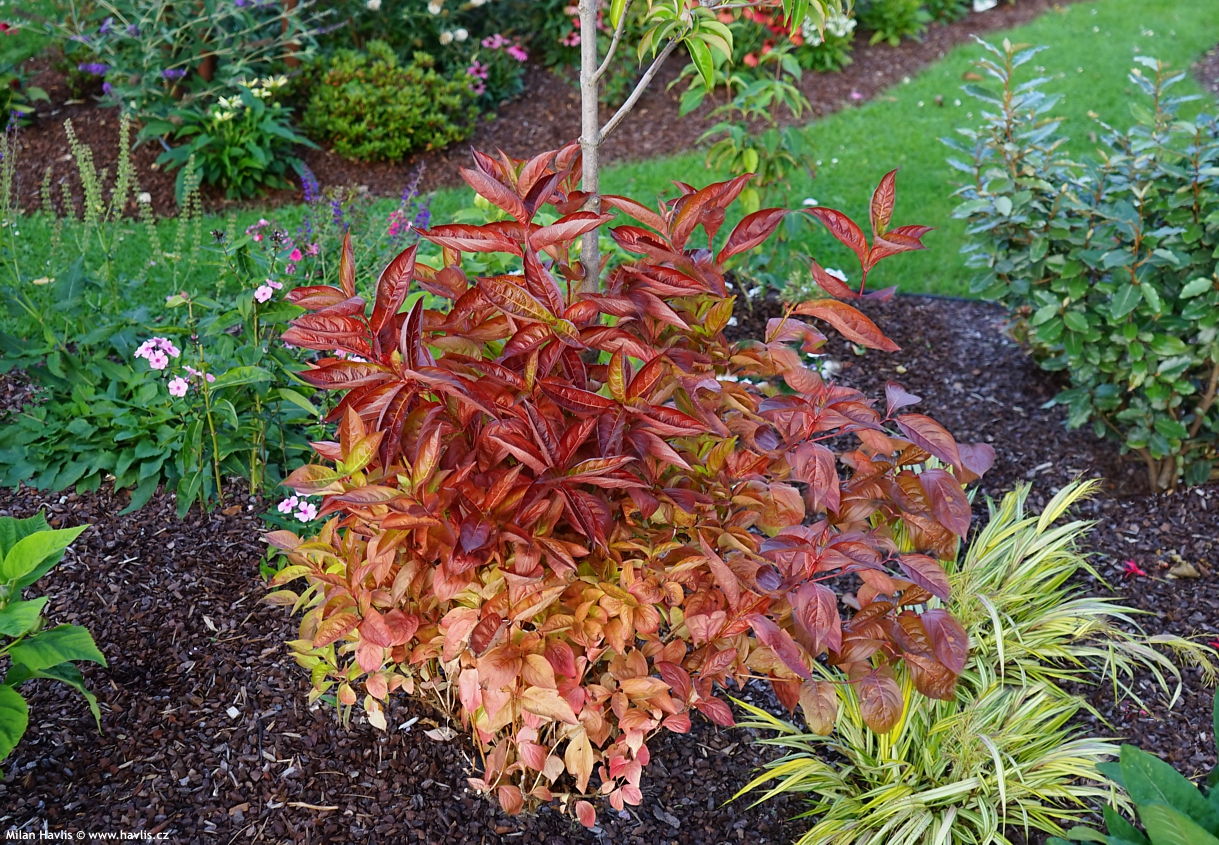Weigela 'WINGS OF FIRE' weigela
size/type
medium-sized shrub,medium-sized shrub
usual height
1-1,5m
usual width
1-1,5m
leaves
deciduous broadleaf
colour of leaves
flowers
showy
colour of flowers
blooming time
May-June
location
full sun
soil type
any (acidic to alkaline)
soil moisture requirements
tolerates (but does not demand) wet ground
USDA zone (lowest)
5 (down to -29°C)
winter protection
for zone 5+6

for zone 7

categorized
Weigela
Weigelas are highly praised and frequently used landscape plants because they are problem-free, profusely flowering shrubs which require little or no maintenance. They are deciduous and commonly grow 1.5-2.5m tall and wide, while new and modern varieties are bred for more compact growth and there are even dwarf cultivars available today. Weigelas come from East Asia (North China, Korea, Japan) and were named after German professor Christian Ehrenfried Weigel (1748-1831) from University of Geifswalg.Description of the plant:
Wings of Fire is a Dutch weigela which originated like an experiment of breeder Hendrik Kolster from Boskoop. He collected many seeds of various weigela species and varieties and let them grow alongside, expecting novelties risen from crosspollination. Truly, there were many of them, some of them quite bizarre, but one kept his attention and showed worth preserving. It was in 2004 and it was named Wings Of Fire. Patents: PP21920 (USA – 2011) and 41417 (Europe – 2015).Wings of Fire weigela is a compact, deciduous, beautifully coloured shrub with large and glossy leaves. They emerge light green in spring and soon turn bronze red to keep this color almost all season long until autumn when they change to maroon. In late spring sparsely appear small, pink, funnel-shaped flowers. This weigela grows moderately to fast into a dense, many branched shrub. Thanks to its unusual and changing colour it looks like a rascal in uniformly green borders, but don’t worry – it will do no harm, just stand there proudly as a glowing gem consuming the admiring looks of all passersby’s.
Pruning is essential if you want a pretty plant which they can easily be. Since weigelas flower mostly on previous year's wood prune them by one third or even one half right after flowering in June so that they have enough of time to make plenty of new twigs that will mature quickly and bear plenty of flowers in the next season. Use them as screening plants in informal flowering hedges, in parks and public landscapes, or as specimens in small sized gardens.
Weigelas thrive in semi-fertile, slightly moist soil, preferably in full sun, however you can often see them growing in part shade or even complete shade and they still bloom. They can take heavy and compacted soil, too, but will need more time to become nice and bushy. Occasional flooding is not a problem, in fact, they prefer excess water rather than drought. Their hardiness varies with variety, but usually they withstand min. -29 °C (USDA zone 5). In spite of their good hardiness large growing weigelas are not suitable for outdoor pots (risk of drying out in winter).
Last update: 10-10-2021
QUICK PRICE OVERVIEW
CURRENTLY SOLD OUT
WANT TO TRY A SIMILAR PLANT?

















